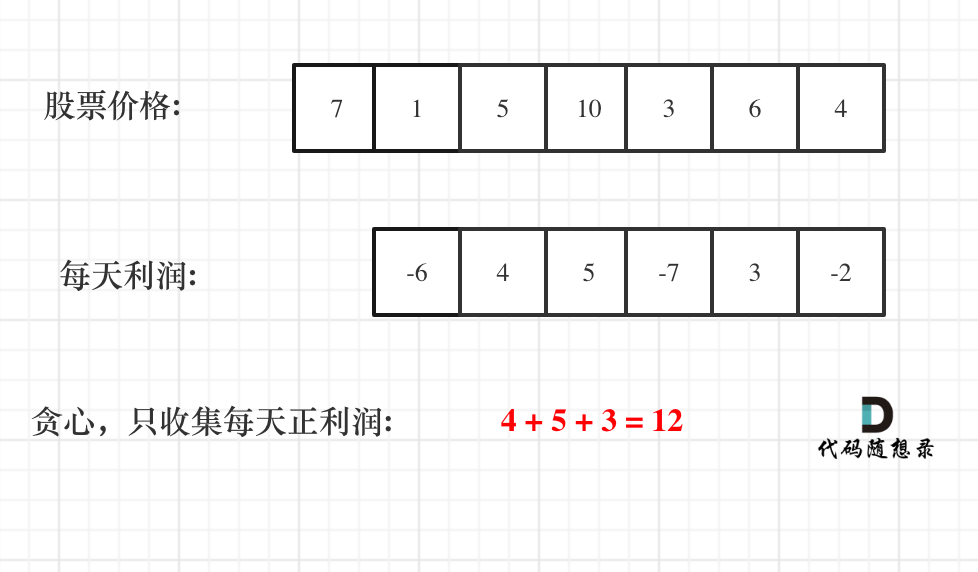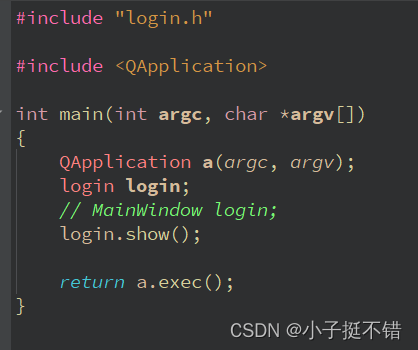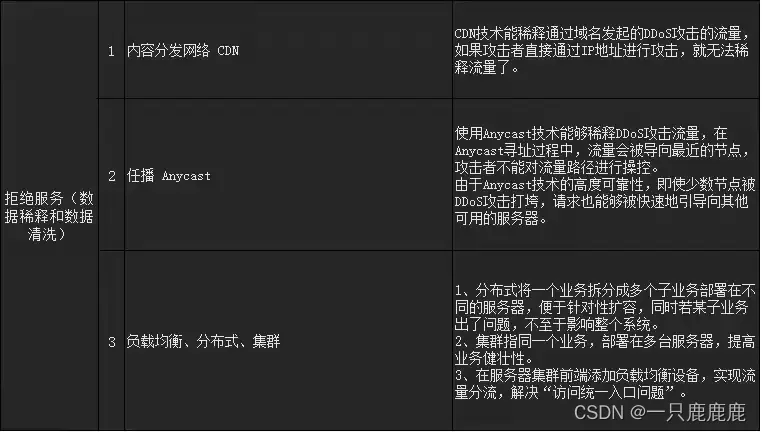
下面开始带大家对单链表的增删查改进行图解
首先给大家介绍一下链表
链表就是每一个结构体中包含一个数据和一个结构体指针,这个指针就相当于锁链的作用将下一个结构体给锁住,但是每个结构体的空间是相对独立的。
图解:
 1 首先实现尾插
1 首先实现尾插
如果我们要尾插,那就要把尾节点找到,然后用next指针进行连接
图解:

下面是代码实现
这里我考虑了一种特殊情况,就是如果链表为空的时候,我们就直接让头节点链接上。
这里必须要用到二阶指针来判定第一个节点是否为空的状态。
(如果用一阶指针的话,那么出了这个函数的作用域之后空间被销毁了,相当于你白忙活了)
每次用完记得把空间释放掉,不然存在内存泄漏
SL* BuyNewnode(DataSL x)
{
SL* Newnode = (SL*)malloc(sizeof(SL));
if (Newnode==NULL)
{
perror("malloc");
assert(Newnode);
}
Newnode->data = x;
Newnode->next = NULL;
return Newnode;
}
void DistorySL(SL** pphead)
{
SL* tail = *pphead;
if (tail)
return;
else
{
while (tail->next)
{
SL* cur = tail->next;
tail->next = NULL;
tail->data = 0;
free(tail);
tail = cur;
}
tail->next = NULL;
tail->data = 0;
free(tail);
}
}
void BackPushSL(SL** pphead, DataSL x)//尾插
{
SL* tail = *pphead;
SL* Newnode = BuyNewnode(x);
if (tail == NULL)
{
*pphead = Newnode;
}
else
{
while (tail->next)
{
tail = tail->next;
}
tail->next = Newnode;
}
}
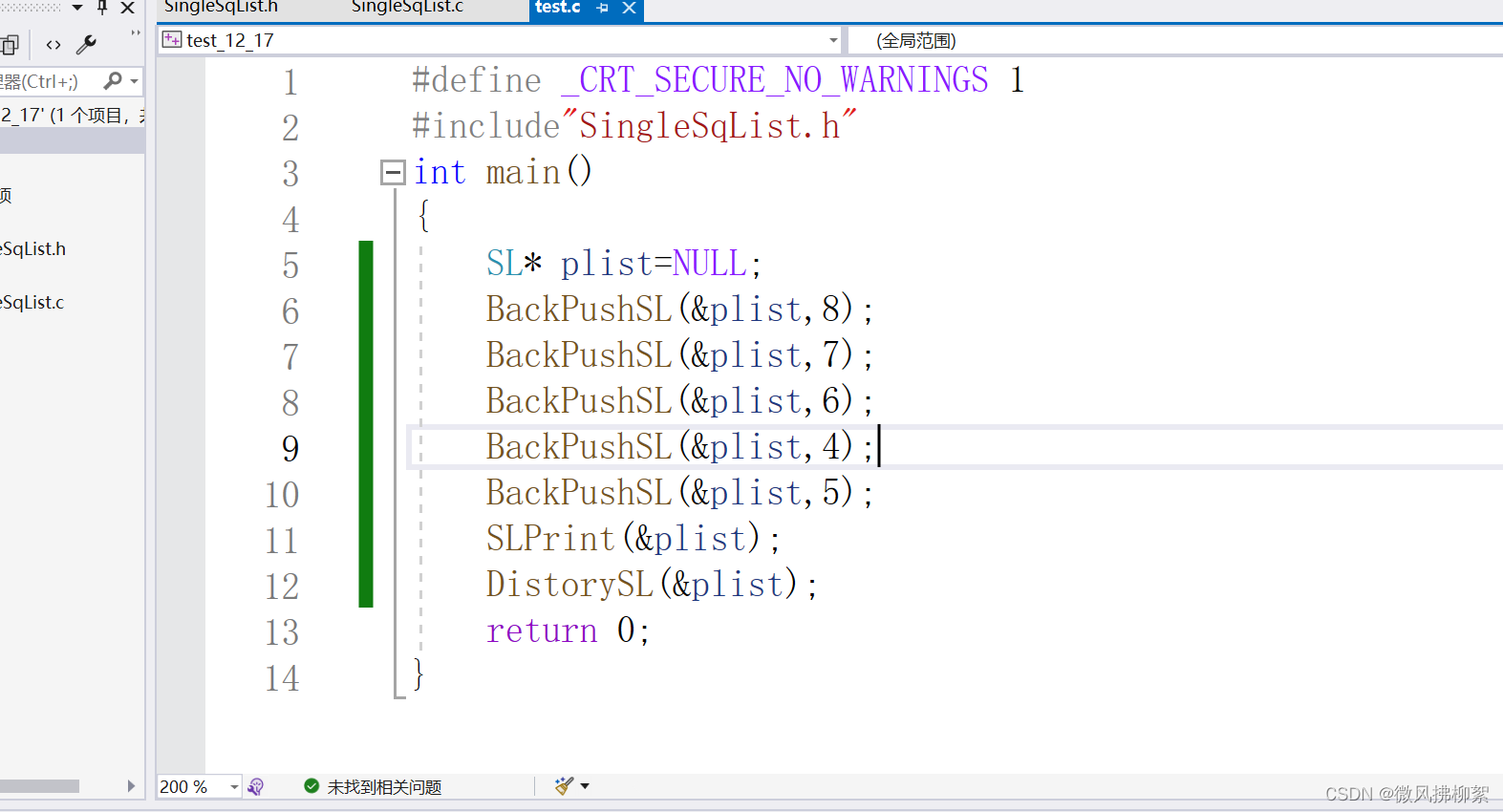
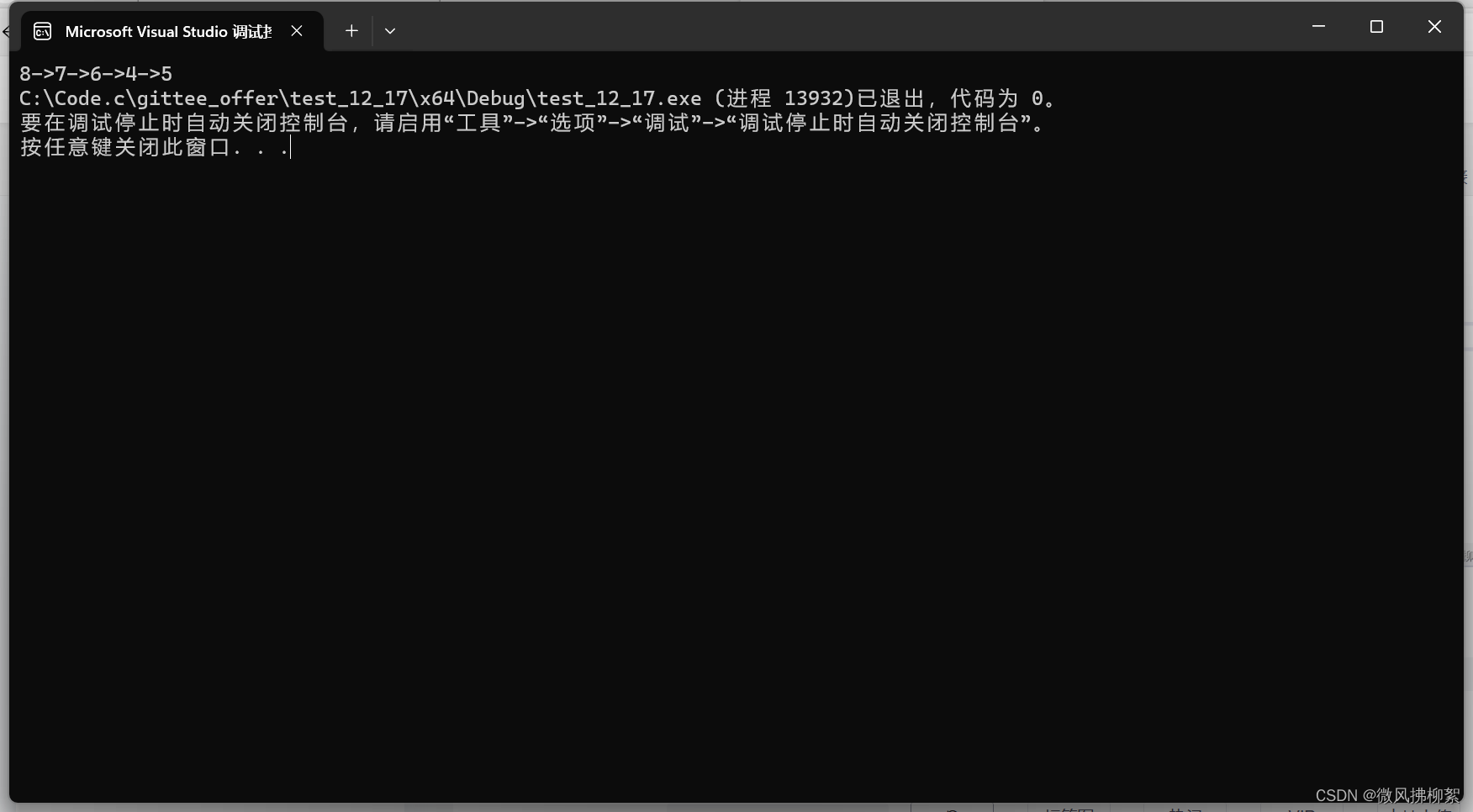
2 然后实现尾删

void BackPopSL(SL** pphead)//尾删
{
assert(pphead);
assert(*pphead);//空链表不删
SL* tail = *pphead;
if (tail->next==NULL)
{
tail->data = 0;
free(tail);
}
else
{
while (tail->next->next)
{
tail = tail->next;
}
free(tail->next);
tail->next = NULL;
}
}3 然后实现头插

void FrontPushSL(SL** pphead, DataSL x)
{
assert(pphead);
SL* tail = *pphead;
SL* Newnode= BuyNewnode(x);
if (tail == NULL)
{
tail = BuyNewnode(x);
}
else
{
Newnode->next = tail;
}
*pphead = Newnode;
}4 然后实现头删

void FrontPopSL(SL** pphead)
{
assert(pphead);
SL* tail = (*pphead)->next;
free(*pphead);
(*pphead)->next = NULL;
*pphead = tail;
}5 然后实现中间插入(配合查找)
中间插入分两种情况前插和后插
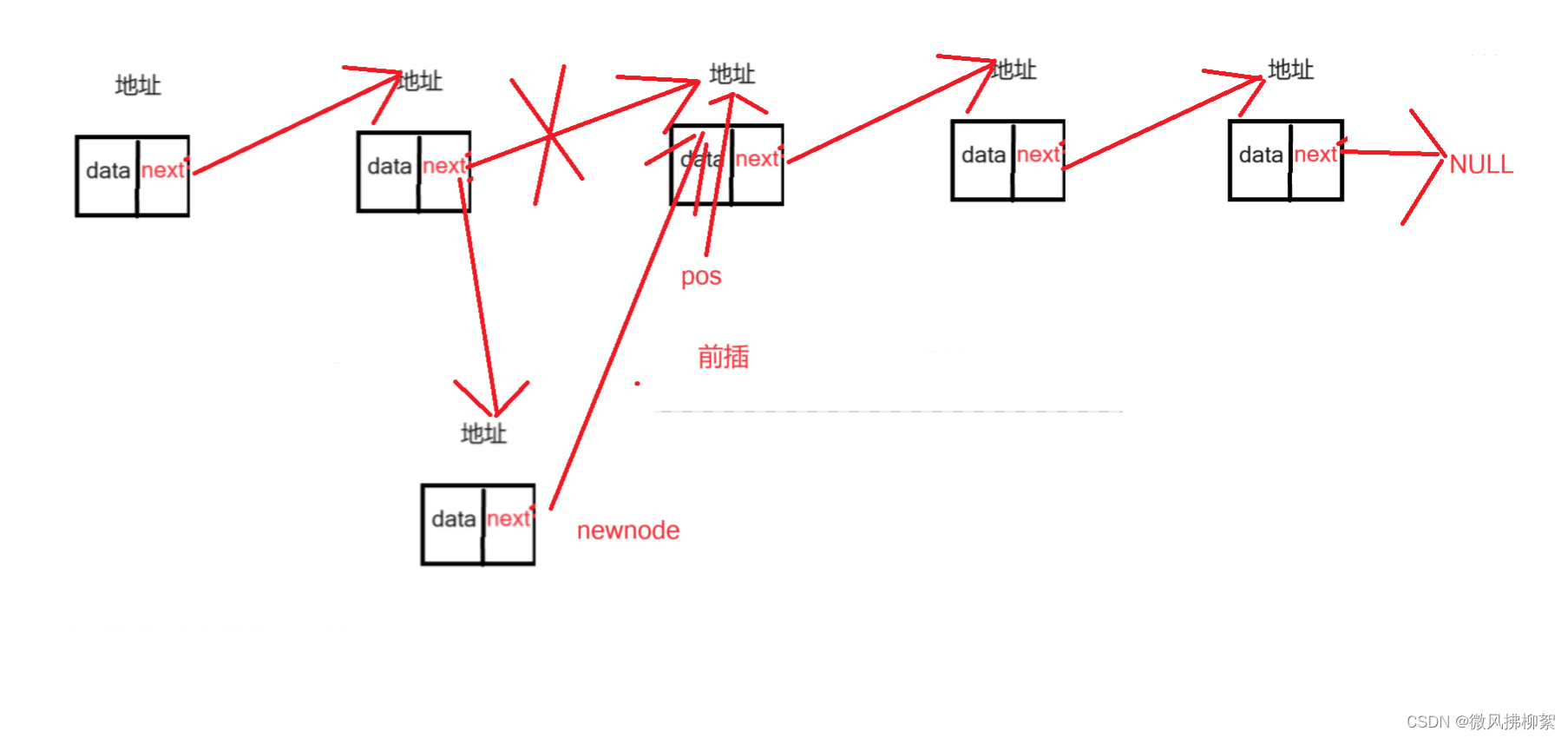
SL* FindSL(SL** pphead, DataSL x)
{
SL* tail = *pphead;
while (tail)
{
if (tail->data == x)
{
break;
}
else
{
tail = tail->next;
}
}
return tail;
}
void FrontInsertSL(SL** pphead,SL* pos,DataSL x)
{
assert(pphead);
assert(pos);
SL* tail = *pphead;
SL* Newnode = BuyNewnode(x);
SL* cur = tail;
if (*pphead == NULL)
{
FrontPushSL(&tail,x);
}
while (tail!= pos)
{
cur = tail;
tail = tail->next;
}
cur->next = BuyNewnode(x);
cur->next->next = pos;
}后插的情况类似
SL* FindSL(SL** pphead, DataSL x)
{
SL* tail = *pphead;
while (tail)
{
if (tail->data == x)
{
break;
}
else
{
tail = tail->next;
}
}
return tail;
}
void AfterInsertSL(SL** pphead, SL* pos, DataSL x)
{
assert(pphead);
assert(pos);
SL* Newnode = BuyNewnode(x);
SL* tail = *pphead;
while (tail != pos)
{
tail = tail->next;
}
SL* cur = tail->next;
tail->next = Newnode;
Newnode->next = cur;
}6 接着实现查删节点(原理和上面差不多,大家可以自行画图)
void EraseSL(SL** pphead, SL* pos)
{
assert(pphead);
assert(pos);
SL* tail = *pphead;
if (tail==pos)
{
BackPopSL(tail);
}
else
{
while (tail->next != pos)
{
tail = tail->next;
}
SL* cur = tail->next;
tail->next = tail->next->next;
cur->data = 0;
cur->next = NULL;
free(cur->next);
}
}7 最后实现改某个节点的内容
void ReviseSL(SL** pphead, SL* pos, DataSL x)
{
assert(pphead);
assert(pos);
SL* tail = *pphead;
if (tail== pos)
{
tail->data = x;
}
else
{
while (tail->next != pos)
{
tail = tail->next;
}
tail->next->data = x;
}
}下面附所有的源码
SingleSeqList.h
#pragma once
#include<stdio.h>
#include<stdlib.h>
#include<assert.h>
typedef int DataSL;
typedef struct SingleSqList SL;
typedef struct SingleSqList
{
DataSL data;
SL* next;
}SL;
//开辟节点
SL* BuyNewnode(DataSL x);
//打印单链表的值
void SLPrint(SL* pphead);
//销毁链表
void DistorySL(SL** pphead);
singleSeqList.h
//对链表的增删查改
//头插尾插,头删尾删
void BackPushSL(SL** pphead,DataSL x);
void BackPopSL(SL** pphead);
void FrontPopSL(SL** pphead);
void FrontPushSL(SL** pphead, DataSL x);
//前插
void FrontInsertSL(SL** pphead,SL* pos,DataSL x);
//后插
void AfterInsertSL(SL** pphead, SL* pos, DataSL x);
//查找节点
SL* FindSL(SL** pphead, DataSL x);
//删除某个节点
void EraseSL(SL** pphead, SL* pos);
//修改某个节点的内容
void ReviseSL(SL** pphead, SL* pos, DataSL x);
SingleSeqList.c
#define _CRT_SECURE_NO_WARNINGS 1
#include"SingleSqList.h"
void SLPrint(SL** pphead)
{
SL* tail = *pphead;
if (tail == NULL)
{
return;
}
while (tail->next)
{
printf("%d->", tail->data);
tail = tail->next;
}
printf("%d", tail->data);
}
void DistorySL(SL** pphead)
{
SL* tail = *pphead;
if (tail)
return;
else
{
while (tail->next)
{
SL* cur = tail->next;
tail->next = NULL;
tail->data = 0;
free(tail);
tail = cur;
}
tail->next = NULL;
tail->data = 0;
free(tail);
}
}
SL* BuyNewnode(DataSL x)
{
SL* Newnode = (SL*)malloc(sizeof(SL));
if (Newnode==NULL)
{
perror("malloc");
assert(Newnode);
}
Newnode->data = x;
Newnode->next = NULL;
return Newnode;
}
void BackPushSL(SL** pphead, DataSL x)//尾插
{
assert(pphead);
SL* tail = *pphead;
SL* Newnode = BuyNewnode(x);
if (tail == NULL)
{
*pphead = Newnode;
}
else
{
while (tail->next)
{
tail = tail->next;
}
tail->next = Newnode;
}
}
void BackPopSL(SL** pphead)//尾删
{
assert(pphead);
assert(*pphead);//空链表不删
SL* tail = *pphead;
if (tail->next==NULL)
{
tail->data = 0;
free(tail);
}
else
{
while (tail->next->next)
{
tail = tail->next;
}
free(tail->next);
tail->next = NULL;
}
}
void FrontPushSL(SL** pphead, DataSL x)
{
assert(pphead);
SL* tail = *pphead;
SL* Newnode= BuyNewnode(x);
if (tail == NULL)
{
tail = BuyNewnode(x);
}
else
{
Newnode->next = tail;
}
*pphead = Newnode;
}
void FrontPopSL(SL** pphead)
{
assert(pphead);
SL* tail = (*pphead)->next;
free(*pphead);
(*pphead)->next = NULL;
*pphead = tail;
}
SL* FindSL(SL** pphead, DataSL x)
{
SL* tail = *pphead;
while (tail)
{
if (tail->data == x)
{
break;
}
else
{
tail = tail->next;
}
}
return tail;
}
void FrontInsertSL(SL** pphead,SL* pos,DataSL x)
{
assert(pphead);
assert(pos);
SL* tail = *pphead;
SL* Newnode = BuyNewnode(x);
SL* cur = tail;
if (*pphead == NULL)
{
FrontPushSL(&tail,x);
}
while (tail!= pos)
{
cur = tail;
tail = tail->next;
}
cur->next = BuyNewnode(x);
cur->next->next = pos;
}
void AfterInsertSL(SL** pphead, SL* pos, DataSL x)
{
assert(pphead);
assert(pos);
SL* Newnode = BuyNewnode(x);
SL* tail = *pphead;
while (tail != pos)
{
tail = tail->next;
}
SL* cur = tail->next;
tail->next = Newnode;
Newnode->next = cur;
}
void EraseSL(SL** pphead, SL* pos)
{
assert(pphead);
assert(pos);
SL* tail = *pphead;
if (tail==pos)
{
BackPopSL(tail);
}
else
{
while (tail->next != pos)
{
tail = tail->next;
}
SL* cur = tail->next;
tail->next = tail->next->next;
cur->data = 0;
cur->next = NULL;
free(cur->next);
}
}
void ReviseSL(SL** pphead, SL* pos, DataSL x)
{
assert(pphead);
assert(pos);
SL* tail = *pphead;
if (tail== pos)
{
tail->data = x;
}
else
{
while (tail->next != pos)
{
tail = tail->next;
}
tail->next->data = x;
}
}
链表每个功能我基本都实现了一遍这里就不一一的展现。(目前测试还未遇到问题)





